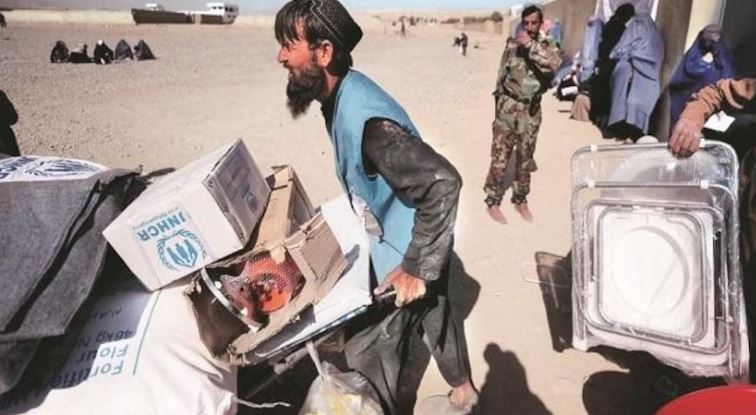The UN agency stated that the situation is getting “worse” in Afghanistan due to the increase in malnutrition. One of the main causes of the rise in malnutrition in Afghanistan has reportedly due to the decrease in humanitarian supplies to the nation…reports Asian Lite News
An estimated 15.8 million people in war-ravaged Afghanistan will experience crisis and emergency levels of food insecurity in 2024, said a United Nations (UN) report released on Thursday.
According to the 2023 UN Afghanistan Annual Results Report, the majority of Afghanistan’s population is unable to procure basic needs such as healthcare, food, livelihood and housing, Xinhua news agency reported.
“As 2023 began, families across Afghanistan continued to struggle to feed their children. Nine out of 10 people were not consuming an adequate amount of food, the cost of which absorbed an overwhelming 89 per cent of household incomes,” it said.
According to the 2023 Global Hunger Index, Afghanistan ranked 114th among 125 countries with sufficient data to calculate the index scores.
War-torn Afghanistan with a population of about 40 million has been facing poverty and economic hardships since the withdrawal of US-led forces in August 2021.
Meanwhile, the United Nations World Food Programme in Afghanistan has warned regarding the rise in malnutrition among women and children in the country, according to Khaama Press.
The report highlights that during the previous three years, the number of admissions for malnutrition in Kabul has tripled.
The UN agency stated that the situation is getting “worse” in Afghanistan due to the increase in malnutrition. One of the main causes of the rise in malnutrition in Afghanistan has reportedly due to the decrease in humanitarian supplies to the nation.
According to Mishro, a nurse at a malnutrition ward, the mental and psychological health of women has declined over the last two years, and the number of malnutrition cases in Afghanistan has been rising, Khaama Press reported.
She underlined that there is not enough room for these patients and that undernourished moms have contributed to their children’s malnourishment.
“For women who are malnourished, the situation is not good in 50 per cent of cases,” she continued.
Meanwhile, World Food Programme has also highlighted the rise in the number of malnourished women in the nation.
This occurs at the same time that human rights organisations are becoming increasingly concerned about Afghanistan’s rising rates of poverty and malnutrition, particularly among women.
Afghan people have been leaving their homes because of poverty, insecurity and conflicts in the country.
Moreover, Afghanistan’s women have faced numerous challenges since the Taliban returned to power in 2021.
Taliban leaders have also disregarded international calls for women and girls to be given access to education and employment. Apparently, they have also issued warnings to other nations not to meddle in Afghanistan’s domestic affairs. (ANI)
ALSO READ-Afghanistan: 15.8M People in Food Insecurity Crisis


